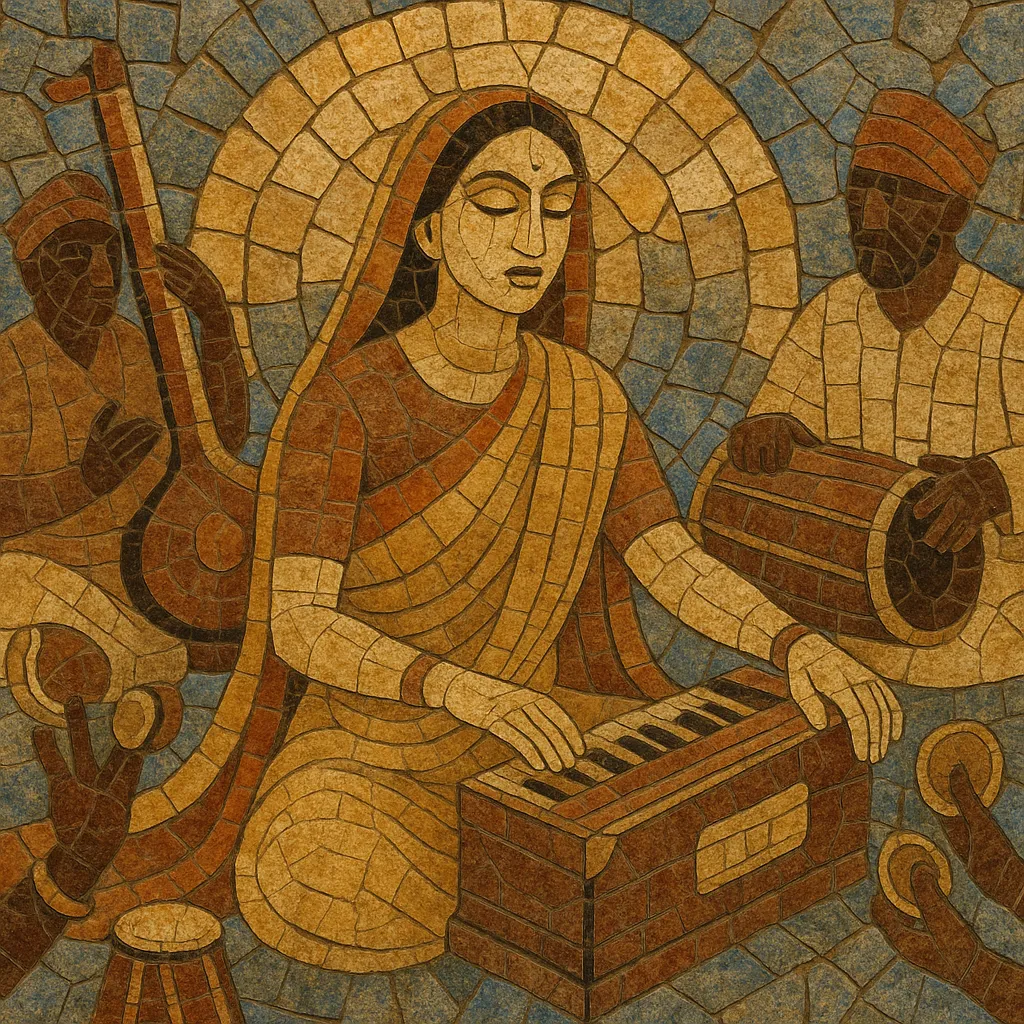Bhajan is a devotional song tradition from India associated with the Hindu Bhakti movement, in which singers express personal love, praise, and surrender to deities such as Krishna, Rama, Shiva, and the Divine Mother.
Musically, bhajans are raga-informed but typically simpler than classical concert pieces, favoring singable melodies, cyclic talas (often Keherva/Keherwa 8-beat and Dadra 6-beat), and steady drone from the tanpura. Common instrumentation includes harmonium, dholak or tabla, manjira/kartal (hand cymbals), and clapping; in folk contexts, ektara and simple percussion are frequent.
Texts are usually in accessible vernaculars (e.g., Hindi, Braj Bhasha, Awadhi, Gujarati, Marathi, Bengali), drawing on the poetry of saint-poets like Mirabai, Surdas, Tulsidas, and Kabir. Performances occur in temples, homes, satsangs, and community gatherings, often featuring call-and-response, refrains, and congregational participation.
Bhajan crystallized during the Bhakti movement (circa 15th–17th centuries), when devotional poet-saints across North and Western India composed simple, emotionally direct songs for communal singing. Earlier antecedents include temple and folk devotional practices and classical devotional song in both Hindustani and Carnatic traditions, but the Bhakti era popularized accessible vernacular poetry and congregational performance.
Key figures such as Mirabai, Surdas, Tulsidas, Kabir, Namdev, Tukaram, Narsinh Mehta, and Purandaradasa provided a vast canon. Their verses used everyday language and metaphors of love and service (bhakti), enabling wide participation beyond trained classical audiences.
Musically, bhajans adopted raga frameworks in a simplified, singable style and favored cyclic talas like Keherva (8) and Dadra (6). Drone (tanpura), harmonium, dholak/tabla, and manjira/kartal anchored the sound, while call-and-response and group refrains encouraged audience involvement. Regional styles emerged—Vaishnava bhajans in Braj and Gujarat, Varkari abhangs in Maharashtra, and Kannada/Tamil devotional song in the South—each blending local folk idioms with classical sensibilities.
From the 20th century onward, gramophone, radio, and film popularized bhajans nationwide, with iconic recordings by M. S. Subbulakshmi, Hari Om Sharan, and later Anup Jalota. Film "bhajans" became a subcurrent within Bollywood/filmi music. In recent decades, bhajan-inspired kirtan and world-fusion scenes have extended the form globally, while temple and community satsang traditions continue to thrive.


